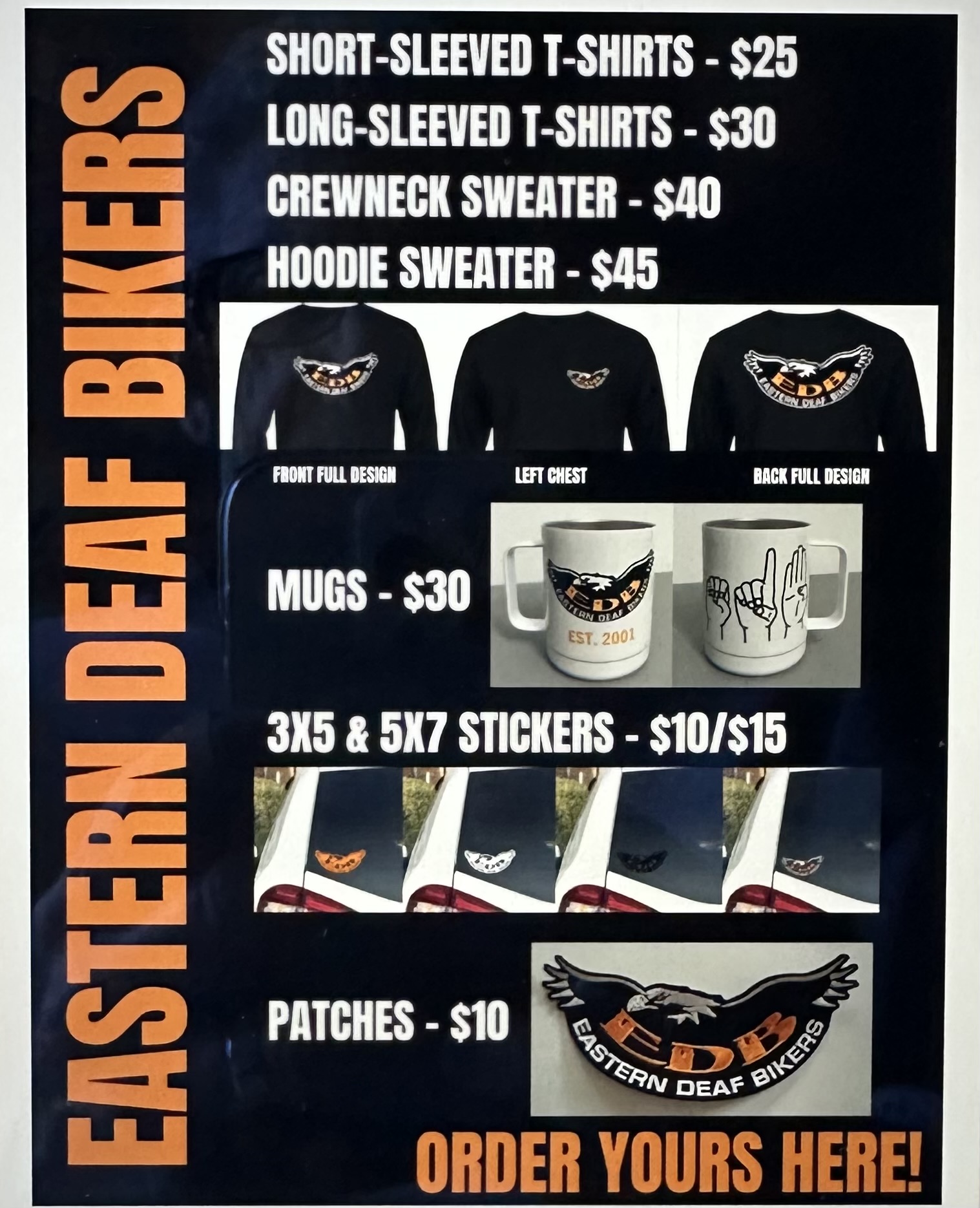| August 2002 Issue 1 Ride for Kids --------------------------------------------------------------------1
Ride for Kids Terror will not defeat big hearts By Louis Caplan September 16th, 2001, only five days after the horrible events of 9/11. On this day, I was supposed to ride for the first time in the annual "Ride for Kids®" (RFK) event in Columbia, MD. For a few days, I was not even sure if the ride would be held, as the whole nation was still reeling from the ghastly attack. However, a defiant message soon appeared on the RFK website, the ride would go on! For those of you who are not familiar, the RFK is actually a series of rides held across the country. Riders collect money that is donated to the Pediatrics Brain Tumor Foundation of the United States (PBTFUS). This foundation funds research into brain tumors that affect innocent children across the United States. After picking up a friend from Gallaudet University in the morning, I made my way up to Columbia, MD, the staging point for the DC Area RFK. As I had never done one of these rides before, I had no idea of what to expect. I was shocked at the number of motorcycles I saw already in the parking lot, and I was early! There were motorcycles of all makes and models, of all sizes and colors. As I started the registration process, a riendly woman handed me a small US flag. She informed me that someone donated a crateful of the flags, and each and every rider was getting one. Looking again at the bikes, I saw American flags attached with any means he rider had possible. After finishing the registration, we each received a RFK pin, and were offered free orange juice, coffee and donuts, courtesy of Krispy Kreme donuts. While finishing off my orange juice and wandering among the hundreds of bikes already there, I ran into several motorcyclist friends who were also participating in the ride. After a brief rider meeting, basically going over a few road rules, everyone made their way to their motorcycles. By this time, the parking lot was full. I later found out that there were 1,150 motorcyclists participating in the ride. We then proceeded to ride a 60-mile course, fully escorted by police officers, through the Maryland countryside. The police stopped traffic at all intersections, so our ride was non-stop. Many people stepped out of their cars to wave at us. I especially remember one gentleman, probably in his 60s or 70s who stood at the side of the road and held a salute to all of the motorcycles as we passed by. At the head of the ride were several motorcycles with sidecars. In the sidecars were special passengers. These were children either currently suffering from, or who have survived brain tumors. These kids were truly the stars of our ride. The ride ended about an hour later, in another large parking lot. The staff obviously had a lot of practice, and the motorcycles were parked very efficiently, and quickly. All the riders then picked up a free bag lunch with a sandwich, some chips and cookies, and a drink. We then continued to a tent and sat down to eat. While we were eating, Mike Traynor, who began the RFK in 1984, led us through "God Bless America." We may not have sounded like a well-trained choir, but you could tell the song came from the heart. Mike then introduced the kids who have been riding in the sidecars, and gave us a brief history about each of them. Next he announced the total proceeds from the ride. We raised $173,219 that day. A new record for the DC Area ride, and the 4th highest of the 21 RFK rides held in 2001. As the event closed up, I looked around and could not find a dry eye among the hundreds of motorcyclists present. We may have been thrown into confusion and rage on 9/11, but the Ride for Kids gave us the emotional booster we all needed. This year's DC Area Ride for Kids will be held on Sunday, September 15th. Louis Caplan (nighthawk700@yahoo.com) will be attending, and would be happy to act as a group leader for others from EDB who would like to attend. The minimum donation is $35 per bike. For further information, see: http://www.ride4kids.org. Get a Grip! By Louis Caplan, EDB Safety Officer Hands are a pretty important part of the human body. They help us hold things, move things, write things, and for most members of this group, they are the primary means of communication. So we want to keep our hands comfortable and safe. When riding a motorcycle, gloves are the key way to accomplish this. Emergency Crews Struggle to Communicate with Deaf Motorcyclists A news story by Paula Horton in The Daily World in Aberdeen, Washington on July 28, 2002 called attention to the struggle by an emergency trauma crew responding to a motorcycle accident. Two deaf people traveling with a group of other deaf bikers were seriously injured when their Harley-Davidson ran off a highway. A firefighter told the reporter that one of the bikers was badly injured and appeared to be in shock but did not want to be treated. When he was unable to communicate with her, he resorted to writing to her on a piece of paper. Later the clever firefighter asked for a pair of mirrored sunglasses worn by another biker and held them up so that one of the injured biker could see how severe her injuries were. That was enough to convince her to heed his request that she go to a nearby hospital for treatment. (Thanks to USA-L News) Used with permission from Northern Virginia Resource Center for Deaf and Hard of Hearing Persons. |
|
||||||
|
Membership Form PDF Form For Guests: Guest Book updated 3/11/2015 |

|
|
||||
|
|
||||||




